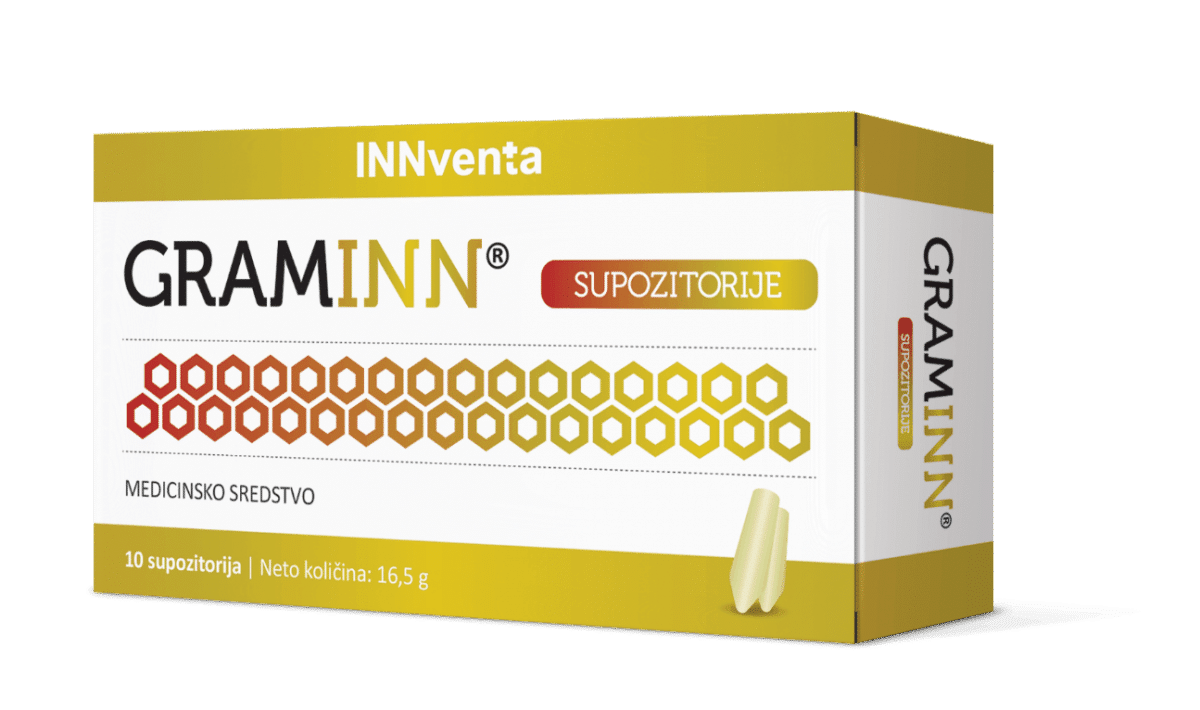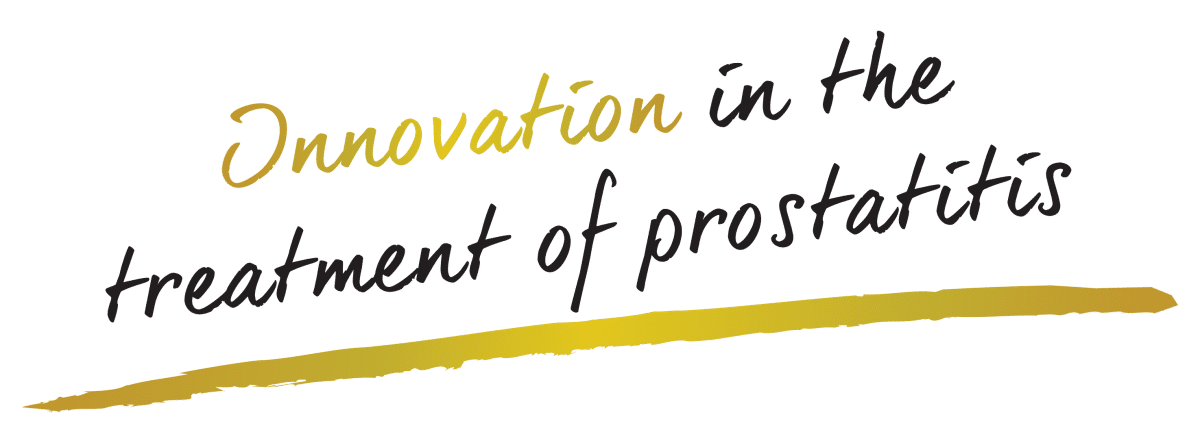
GRAMINN®

GRAMINN® suppositories are medical device indicated as the additional therapy of local symptoms (tingling, pain) related to the acute and chronic prostatitis, problems with hemorrhoids and development of anal fissures and fistulas.
Indications for GRAMINN® suppositories?
- Non-bacterial and bacterial acute and chronic prostatitis
- Chronic pelvic pain syndrome
- Anorectal diseases
- Haemorrhoidal disease
- Anorectal fissures and fistulas
- After proctological procedures
Why GRAMINN® suppositories?
- Unique therapeutic option for local treatment of all forms of prostatitis
- Strong anti-inflammatory effect enables fast relieving of symptoms
- Creates the protective barrier which accelerates epithelialization and prevents the penetration of pathogens from the rectum
- Prevention of swelling and fibrosis in chronic inflammation
- Efficiently regulating the symptoms of haemorrhoidal disease, fissures and fistulas
- Proven mechanism of action
- Without the potential interactions and adverse effects

What do GRAMINN® suppositories contain?
Active ingredients: |
|---|
GRAMINEX® NAXTM 7% (rye pollen extract)
|
Sodium hyaluronate |
Liposoluble common mallow extract (Malva sylvestris L.)
|
Liposoluble marigold extract (Calendula officinalis L.)
|
Liposoluble aloe extract (Aloe barbadensis M.)
|
Clove essential oil (Eugenia caryophyllus)
|
Vitamin E, vitamin A
|
GRAMINEX® NAXTM 7% (rye pollen extract)
GRAMINEX® NAXTM 7% represents the liposoluble standardized extract from the rye pollen powder containing minimum 7% of phytosterols, fatty acid and micronutrients necessary for maintenance of health and prostate function.
GRAMINEX® NAXTM 7% inhibits the production of inflammation mediators, providing for the anti-inflammatory effect with reduction of swelling, pain, symptoms of the lower urinary tract as well as prevention of fibrosis.
Pollen powder extract has extremely high absorbency of free radicals resulting in antioxidative effect.
When applied on the mucous membrane, it builds the protective lipid barrier which maintains the required degree of hydration protects the mucous membrane from the penetration of noxa into deeper layers and accelerates the healing of erosions and fissures.
CARVACROL (Clove essential oil)
Carvacrol represents monoterpene phenol obtained from clove extract which exhibits a strong anti-inflammatory effect.
Carvacrol inhibits the activity of transcription factor NF-kB inhibiting thus the synthesis of free radicals and proinflammatory molecules.
Carvacrol accomplishes its analgesic effect through mild desensitization of TRPV receptors, reducing thus the pain as one of the most significant symptoms of acute prostatitis, painful prostate syndrome, problems with hemorrhoids, anal fissures and fistulas.
Liposoluble extracts and hyaluronic acid
Liposoluble extracts of common mallow, aloe and marigold contain slime and flavonoids in high concentration that play a role in building a protective water absorbing barrier, which is compact and elastic.
Liposoluble extracts together with hyaluronic acid have a soothing effect, provide hydration and accelerate the healing process of damaged mucosa.
Method of use
One suppository a day, best applied in the evening, before going to bed.
Length of treatment: 10 days in continuity or as advised by a doctor. Maximum length of continuous administration is 20 days.
INDICATIONS | THERAPY |
|---|---|
Acute non-bacterial and bacterial prostatitis | GRAMINN®suppositories individually or concomitantly with antibiotics, according to the doctor’s advice |
Chronic prostatitis and chronic pelvic pain syndrome | |
Proctological diseases and after surgical treatments | GRAMINN®suppositories individually or as a part of other therapy, according to the doctor’s advice |
Presentation: 10 suppositories.